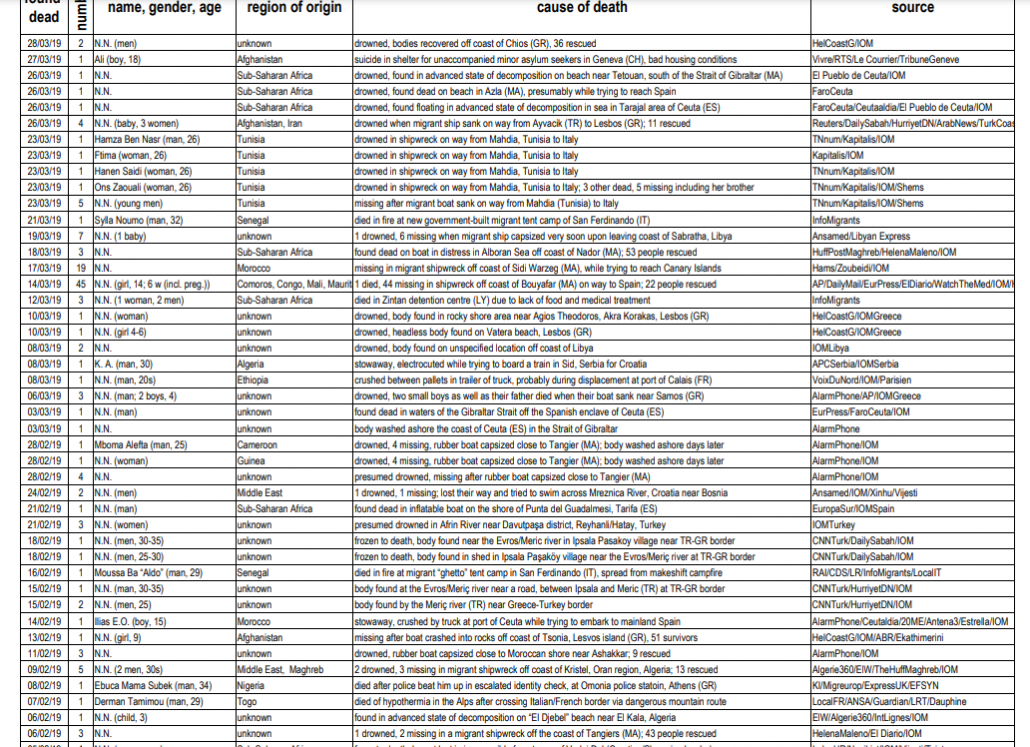Guest post by Marta Esperti and Antoine Pécoud, University of Sorbonne Paris Nord. This is the first post of Border Criminologies themed series on 'Deaths at Borders' organised by Marta and Antoine.

In his 2001 seminal ‘Death at the Border’ article, Wayne Cornelius documented the many consequences of the intensification of control at the US-Mexico border since the 1990s.
These included a higher rate of permanent settlement (because Mexican immigrants feared the difficulty of illegal border-crossing), an increased reliance on smugglers (who became indispensable to avoid surveillance, and whose fees augmented), an overall persistence of irregular migration despite heightened control (given employers’ continued need for cheap undocumented labour and the absence of workplace control) – and, most problematically, a sharp increase in migrant deaths.
Forced to take greater risks, migrants ventured into inhospitable and desert areas where they were exposed to risks such as hypothermia, dehydration or sunstroke - raising the issue of ‘the morality of a strategy of immigration control that deliberately places people in harm's way’.
Twenty years later, the border is more controlled than ever – and the consequences are exactly the same. According to the International Organization for Migration, 380 migrants died at the US-Mexico border in 2019.
But it is in another region that migrant deaths have become one the most pressing moral and political issues of our time. According to the NGO United for Intercultural Action, over 36,000 migrants have died in Europe since 1993. Border deaths were first reported in 1990 in the Strait of Gibraltar and the number of casualties started to increase dramatically since the beginning of the Arab uprisings in 2011.
This blog series explores some of the key questions raised by this ongoing tragedy. Which responsibilities should be assigned to whom to account for these deaths? How do border deaths relate to older (and perhaps better-known) realities, such as slavery, war or forced disappearances? Under what conditions border deaths become counted – and therefore visible and, in some cases, (de)politicized? What is the respective role of states, civil society and other actors (such as Frontex) in addressing these deaths?
This blog series draws upon a special issue of American Behavioral Scientist, coordinated by Marta Esperti and Antoine Pécoud.
Any comments about this post? Get in touch with us! Send us an email, or post a comment here or on Facebook. You can also tweet us.
__________
How to cite this blog post (Harvard style)
Esperti, M., and Pécoud, A. (2020). New Insights on the “Deaths at the Border” Debate. Available at: https://www.law.ox.ac.uk/research-subject-groups/centre-criminology/centreborder-criminologies/blog/2020/10/new-insights [date]
Share:








